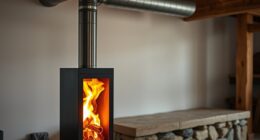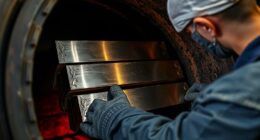I was peacefully sitting by my wood stove, soaking in its warmth, when out of nowhere, a small explosion shook my living room. Instantly, panic set in as I wondered, ‘What is going on?’
If you’ve ever experienced a similar situation, fear not. In this article, we will explore the possible causes of these small explosions in wood stoves and provide you with preventive measures to ensure your safety and peace of mind.
Key Takeaways
- Small explosions in wood stoves can be caused by creosote buildup, wet or green wood, lack of regular cleaning, and ignition of volatile materials.
- To prevent explosions, regularly clean the stovepipe and chimney, use properly seasoned firewood, ensure proper airflow and ventilation, and avoid using wet or green wood.
- Ventilation issues in wood stoves can be due to a blocked chimney, insufficient air supply, closed damper, inadequate draft, or improper flue sizing.
- Excessive creosote buildup is highly flammable and can lead to chimney fires, so regular cleaning and inspection are crucial to prevent damage.
Possible Causes of Small Explosions in Wood Stoves
I need to figure out what could be causing these small explosions in my wood stove, so that I can prevent any further damage. Common mistakes in operating wood stoves can lead to these explosions.
One possible cause is the buildup of creosote inside the stovepipe or chimney. Creosote is a highly flammable substance that forms when wood is burned incompletely.
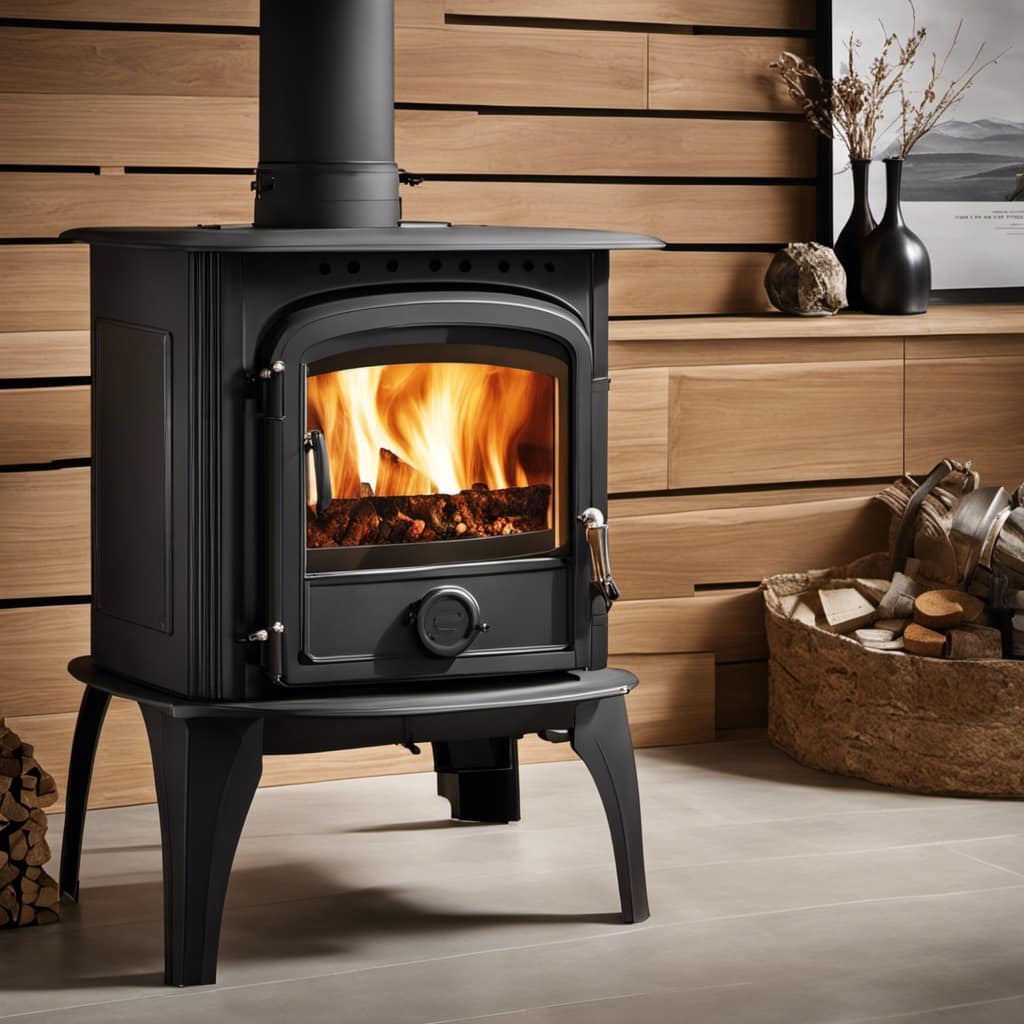
Another common mistake is using wet or green wood, which produces excessive smoke and can create a volatile environment inside the stove.
Troubleshooting tips to prevent these explosions include regular cleaning of the stovepipe and chimney to remove creosote buildup, and using properly seasoned firewood with a moisture content of around 20%.
Additionally, ensuring proper airflow and ventilation inside the stove can help prevent explosive conditions.
Understanding Ventilation Issues in Wood Stoves
After reading about the potential causes of small explosions in wood stoves, I now understand the importance of proper ventilation to prevent these issues. Common ventilation problems can lead to a buildup of gases, such as carbon monoxide, which can then ignite and cause explosions. Troubleshooting wood stove ventilation is crucial to ensure the safe and efficient operation of the stove. Here is a table summarizing some common ventilation problems and their solutions:
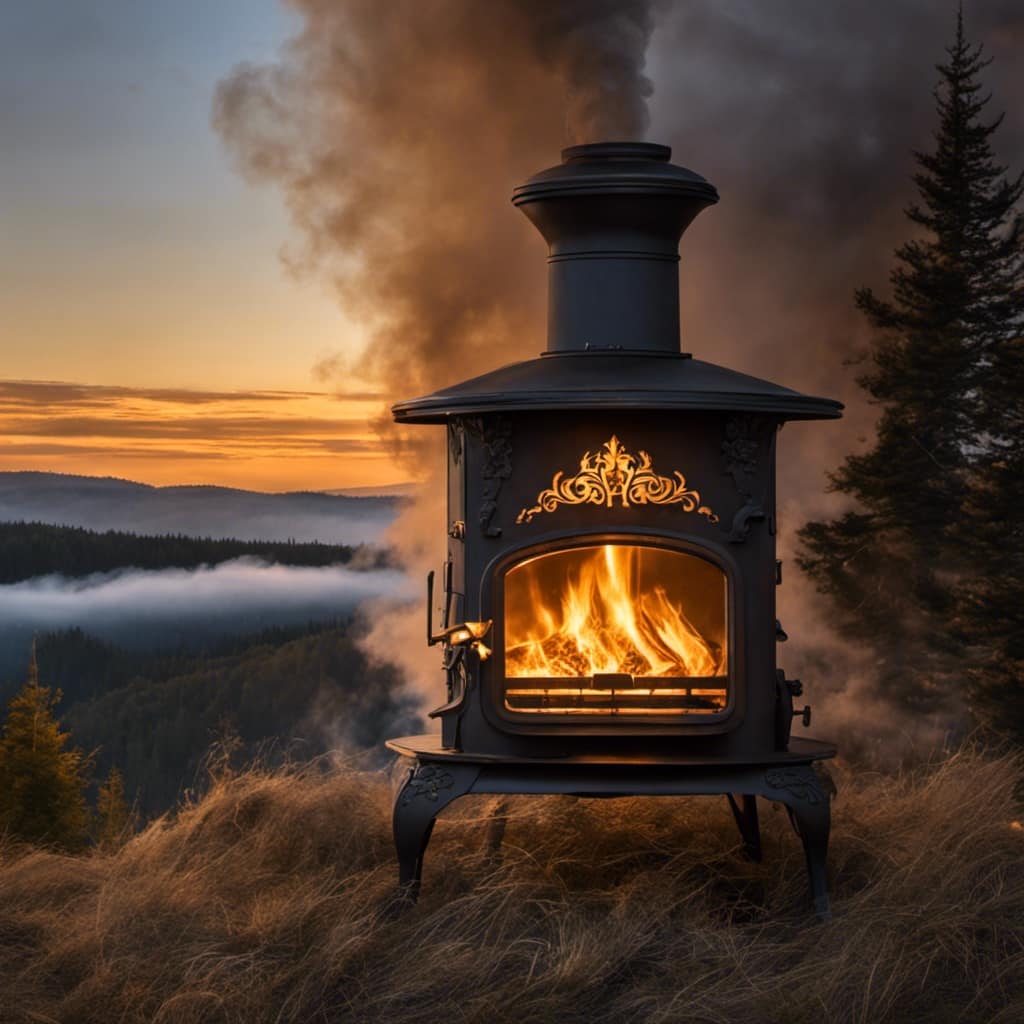
| Ventilation Problem | Possible Solution |
|---|---|
| Blocked Chimney | Clear any obstructions |
| Insufficient Air Supply | Increase air intake |
| Closed Damper | Open damper fully |
| Inadequate Draft | Install a draft inducer |
| Improper Flue Sizing | Consult a professional |
It is essential to address these ventilation issues promptly to prevent potential hazards. The next section will discuss the dangers of excessive creosote buildup and how to mitigate them.
The Dangers of Excessive Creosote Buildup
Excessive creosote buildup in the chimney poses a serious fire hazard. Creosote is a highly flammable substance that can accumulate in the chimney when wood is burned. If not properly cleaned, this buildup can lead to a chimney fire, causing extensive damage to the home and putting lives at risk.
The dangers of creosote ignition can’t be overstated. Regular chimney cleaning is of utmost importance to prevent the buildup of creosote. By having the chimney inspected and cleaned at least once a year, homeowners can significantly reduce the risk of fire.
A professional chimney sweep will remove any creosote deposits, ensuring a safe and efficient operation of the fireplace or wood stove. Don’t overlook the importance of regular chimney maintenance – it could save your home and your life.

Identifying and Handling Volatile Materials in Wood Stoves
There might be some volatile materials present in wood stoves, and it’s crucial to identify and handle them properly. When it comes to handling hazardous materials in wood stoves, safety precautions are essential to prevent accidents and ensure the well-being of everyone involved.
Here are a few key points to consider:
Identifying volatile materials:
Understanding the types of materials that can be present in wood stoves, such as creosote and soot.

Recognizing the signs of potential volatility, such as unusual smells or discoloration.
Handling hazardous materials:
Using protective gear, such as gloves and goggles, to minimize the risk of exposure.
Following proper disposal procedures to prevent environmental contamination.
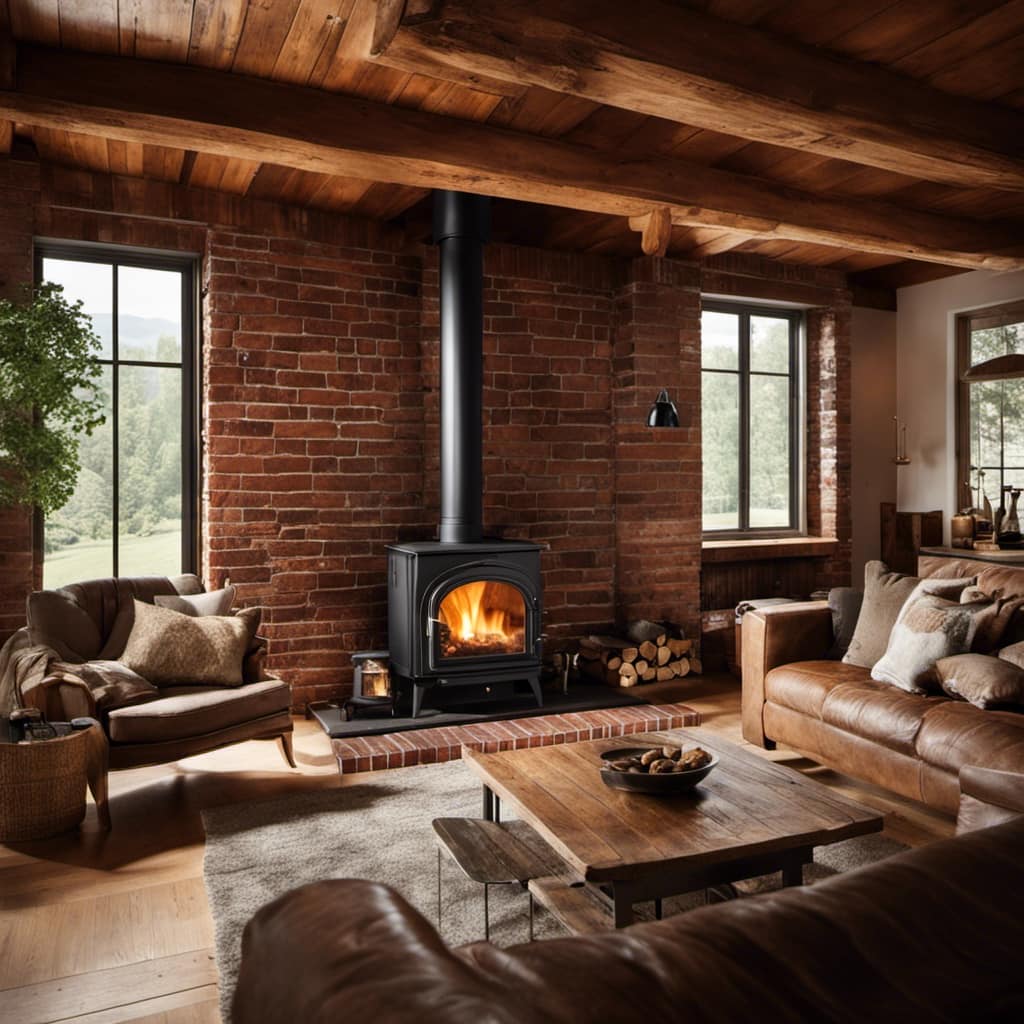
Preventive Measures for Avoiding Small Explosions in Wood Stoves
I always take two preventive measures to avoid small explosions in my wood stove.
First and foremost, I prioritize regular ventilation maintenance. This involves cleaning the chimney and inspecting the flue to ensure proper airflow. Any blockages or buildup can lead to a dangerous backdraft, increasing the risk of explosions.
Secondly, I adhere to strict safety precautions. Before lighting a fire, I thoroughly check for any signs of damage or wear on the stove, such as cracks or loose fittings. Additionally, I always use dry, seasoned firewood to prevent the buildup of creosote, a flammable substance that can ignite and cause explosions.
Could a Small Explosion in My Wood Stove Be a Sign of a Carbon Monoxide Issue?
If there’s a small explosion in your wood stove, it could indicate a potential carbon monoxide issue. It’s crucial to have a reliable wood stove carbon monoxide detection system in place to ensure the safety of your home and family. Don’t ignore any unusual signs – prioritize safety first.
Frequently Asked Questions
What Should I Do if I Experience a Small Explosion in My Wood Stove?
If I experience a small explosion in my wood stove, I should prioritize safety by first ensuring everyone is out of harm’s way. Then, I should inspect for damages, extinguish any flames, and contact a professional for repairs.
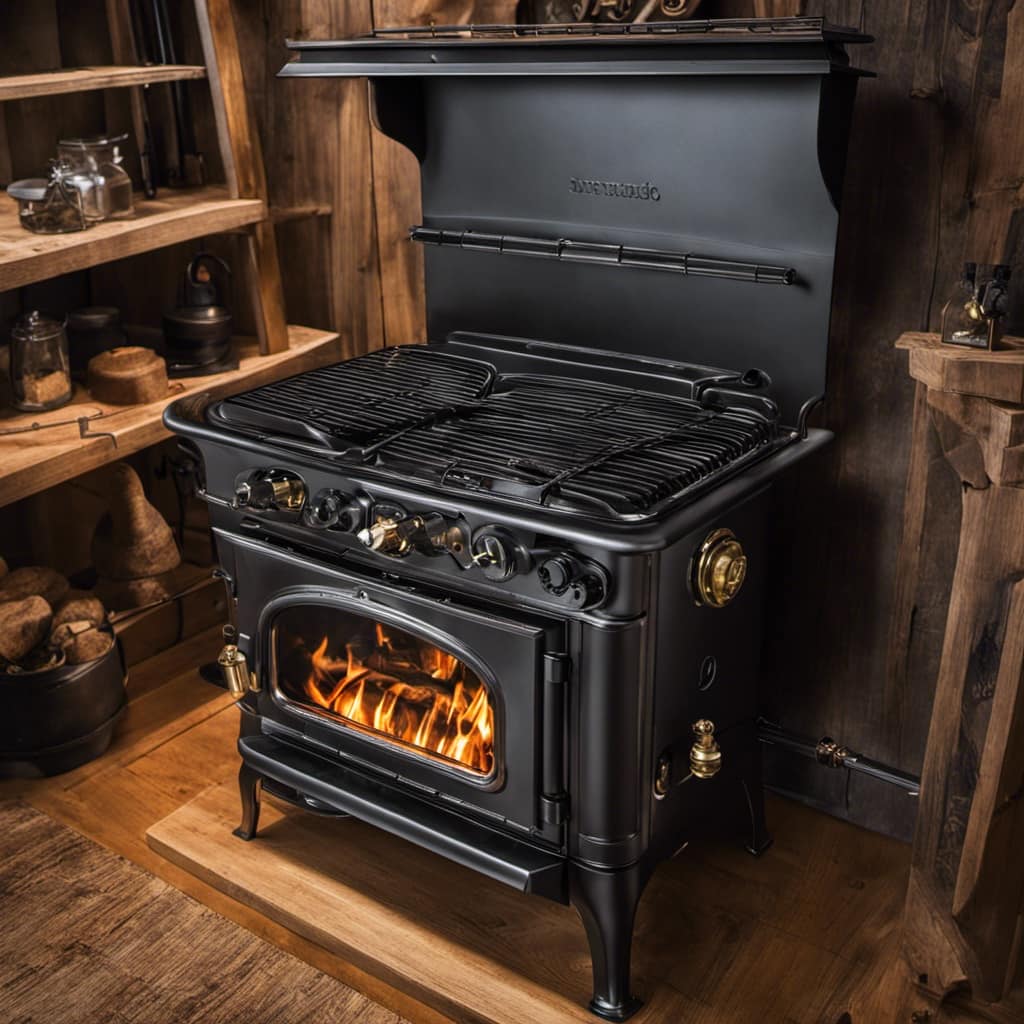
Can a Small Explosion in a Wood Stove Cause Significant Damage to My Home?
A small explosion in a wood stove can lead to significant damage in your home. It’s crucial to understand how to safely operate a wood stove and be aware of the potential dangers involved.
Are Small Explosions in Wood Stoves Common, or Is It a Rare Occurrence?
Small explosions in wood stoves can occur, but they are rare. The causes can include buildup of combustible materials, closed dampers, or improper ventilation. To prevent this, users should regularly clean their stoves and follow safety precautions.
How Can I Prevent Small Explosions in My Wood Stove From Happening in the First Place?
To prevent small explosions in my wood stove, I follow several safety measures. Regularly cleaning the stove and chimney, using seasoned wood, and ensuring proper airflow are key prevention techniques.
Are There Any Warning Signs or Indicators That My Wood Stove May Be at Risk of a Small Explosion?
There are warning signs and safety measures to consider when using a wood stove. It is important to be vigilant for any signs of overheating, unusual noises, or smoke leakage, as these may indicate a potential risk of a small explosion.
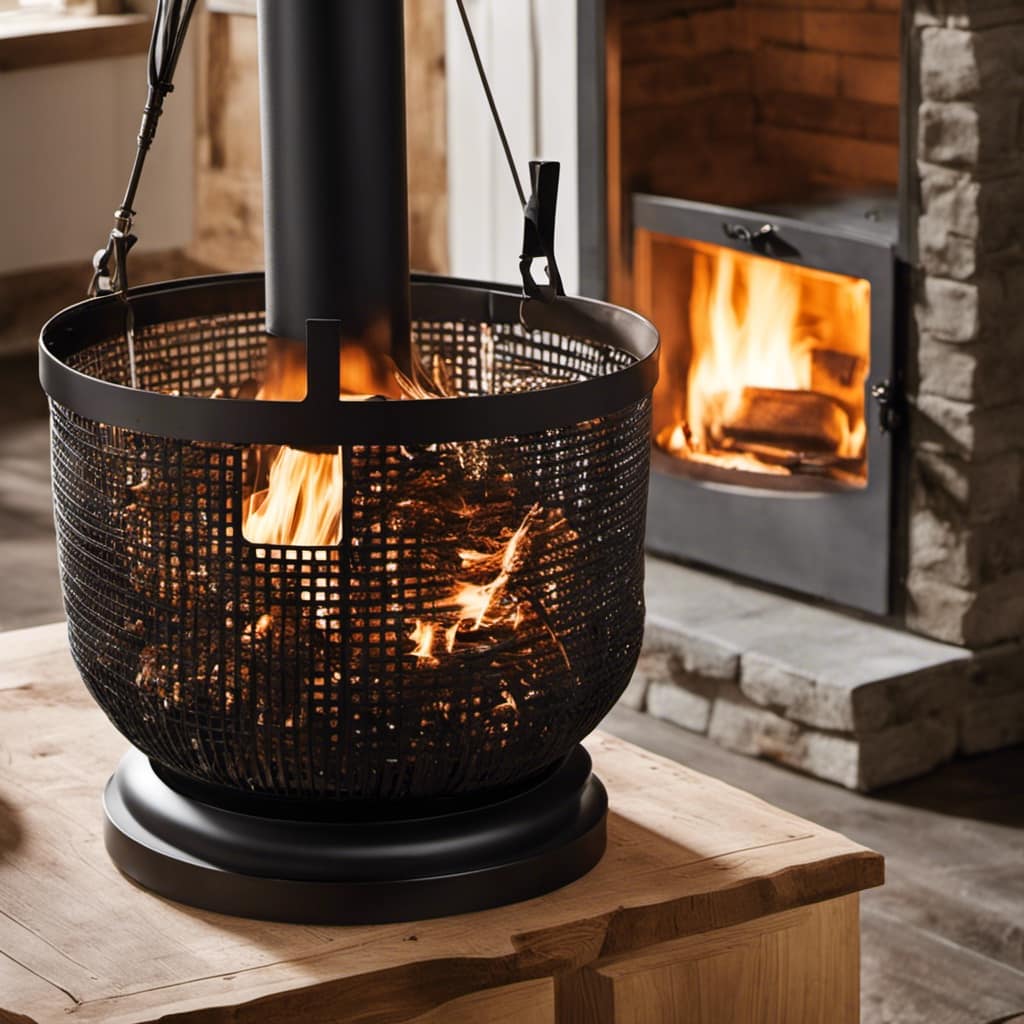
Conclusion
In the midst of the crackling fire, a sudden burst of energy erupts from the wood stove, sending sparks dancing into the air. This small explosion serves as a stark reminder of the potential dangers lurking within.
As we navigate the intricacies of ventilation, creosote buildup, and volatile materials, we must remain vigilant in our efforts to prevent such incidents. By taking preventive measures, we can ensure the warmth and comfort of our homes while keeping the flames of danger at bay.
Growing up surrounded by the vast beauty of nature, Sierra was always drawn to the call of the wild. While others sought the comfort of the familiar, she ventured out, embracing the unpredictable and finding stories in the heartbeat of nature.
At the epicenter of every remarkable venture lies a dynamic team—a fusion of diverse talents, visions, and passions. The essence of Best Small Wood Stoves is crafted and refined by such a trio: Sierra, Logan, and Terra. Their collective expertise has transformed the platform into a leading authority on small wood stoves, radiating warmth and knowledge in equal measure.










